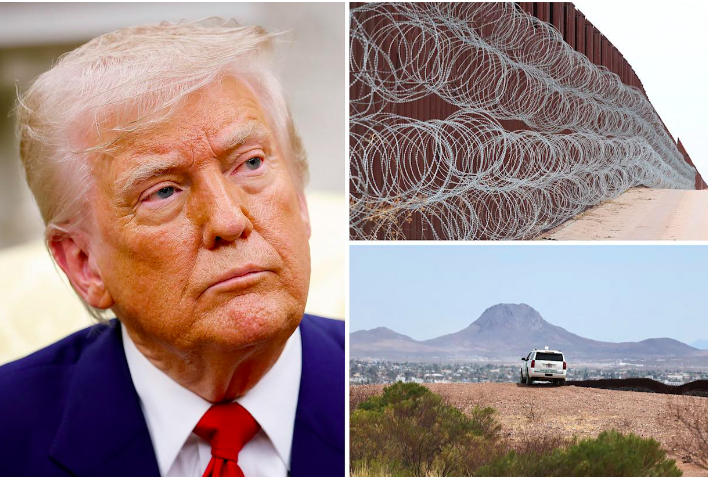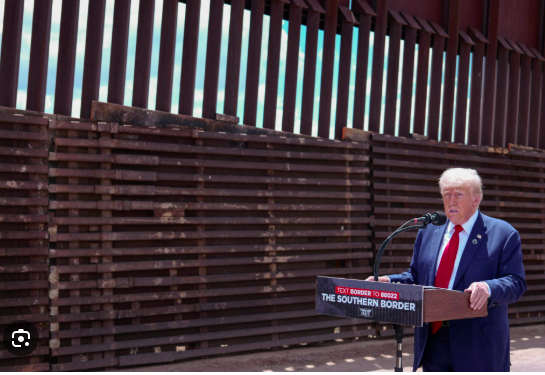Trump Authorizes Military to Take Control of Federal Land Along Southern Border
President Donald J. Trump has taken decisive action to secure the southern border by authorizing the U.S. military to assume control over federal land adjacent to key areas of the U.S.–Mexico boundary. The directive, announced Friday, empowers the Department of Defense to enforce national security protocols and infrastructure development on federally controlled territory amid ongoing illegal immigration surges.
This bold move comes as the Trump administration intensifies its efforts to clamp down on illegal border crossings, human trafficking operations, and cartel activity that has plagued border regions under the Biden administration. The order provides the military with authority to bypass bureaucratic red tape and seize control of critical land parcels that had previously been stalled due to regulatory hurdles or federal agency delays.
The new authority applies specifically to land managed by the Bureau of Land Management, the Department of the Interior, and the U.S. Forest Service. Trump’s directive allows the Department of Defense to utilize these lands for immediate national defense purposes, including the installation of surveillance systems, mobility operations, and physical barrier expansion.
“The military is now fully empowered to secure the land we need to protect the American people,” a senior administration official told The Epoch Times (source).
The order signals a return to border enforcement policies prioritizing national sovereignty and the protection of American citizens. The Trump administration argues that such measures are necessary given the chaos unleashed during Biden’s term, which saw record-breaking numbers of illegal aliens flood into the United States, placing immense strain on border towns and federal resources.
During a press briefing at the White House, Trump emphasized the urgent need for action, citing not only the flow of illegal immigrants but also the influx of fentanyl and other narcotics trafficked across an unsecured border. “We are taking back control,” Trump declared. “No more waiting on agencies that delay and obstruct. The military is stepping in.”
Critics of the move, including holdovers from the previous administration, argue that the military’s involvement raises questions about federal land use. However, supporters contend that Trump’s use of executive authority is both constitutional and necessary given the national security threat posed by unchecked migration and foreign criminal organizations operating along the southern frontier.
The Department of Defense will now have a more direct role in constructing and expanding border infrastructure without the delays typically associated with civilian agency coordination. Military engineers and logistical teams are expected to begin immediate assessments of high-risk areas for barrier reinforcement and electronic surveillance installation.
Former senior DHS officials praised the action, noting that under Biden, key border zones were intentionally left exposed. “This is what leadership looks like,” one former official told the New York Post (source). “Trump is correcting the reckless abandonment of border security we saw under the last administration.”
The order also outlines cooperation between the Department of Homeland Security and the Department of Defense, ensuring a coordinated operational effort. Troops stationed along the southern border will now have enhanced legal backing to perform enforcement-related support, surveillance, and deterrence missions.
From a MAGA conservative standpoint, the decision marks a return to common-sense governance and strong national leadership. For years, Republicans and conservative Americans have sounded the alarm over the consequences of porous borders—ranging from violent crime to economic strain on public services. Trump’s directive addresses those concerns directly and unapologetically.
This strategic use of the military does not equate to martial law or domestic occupation, as some far-left commentators suggest. Rather, it reflects the President’s obligation to protect the nation from external threats, particularly those exploiting weaknesses in border infrastructure and enforcement protocols.
The move has also reignited discussions on federal land use. Under Trump, federal land is viewed not as a bureaucratic obstacle, but as a resource to be mobilized for national interest—especially when public safety and national security are at risk.
In the coming weeks, the military is expected to begin pre-deployment preparations, including base camp setup, equipment transport, and mission briefings. Border residents, particularly those in hard-hit sectors such as Arizona and Texas, have expressed strong support for the military’s expanded role.
President Trump’s executive action underscores his administration’s broader strategy of eliminating bureaucratic stagnation and prioritizing law, order, and American sovereignty. It also highlights the contrast between the current administration and the previous one, which placed more emphasis on processing asylum claims than preventing unlawful entry.
As the 2024 election cycle continues to gain momentum, this move is expected to resonate with core conservative voters who have long demanded stronger enforcement and real consequences for illegal immigration. Trump has once again proven willing to do what Washington bureaucrats and political elites have long refused—put America First.





